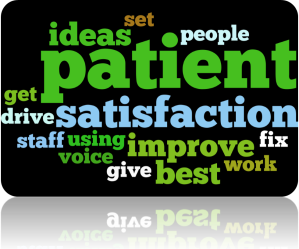 According to a study conducted by researchers in the Department of Psychology at the University of Basel and Harvard Medical School, trust in doctors can lead to higher patient satisfaction. The article notes that Trust had “a positive effect on the satisfaction, health-related behavior, quality of life and subjectively perceived complaints of those being treated.”
According to a study conducted by researchers in the Department of Psychology at the University of Basel and Harvard Medical School, trust in doctors can lead to higher patient satisfaction. The article notes that Trust had “a positive effect on the satisfaction, health-related behavior, quality of life and subjectively perceived complaints of those being treated.”
Essentially, a patient’s trust in the care giver reduced patient complaints, improved patient compliance with provider instructions, and overall improved patient satisfaction. In other words, two patients could have had the same clinical care provided, but if one of the patients trusted their physician more, then that patient’s attitude and actions improved.
There are may aspects of customer service that impact Trust. For example, one employee can “build up” another employee in front of the customer such as “Jennifer has been a nurse for 8 years on this unit, and she’s cared for and helped many get through a similar situation to yours.” That statement builds credibility, which adds to patient trust.
When you’re trying to build the patient’s trust, every “Moment of Truth” can be a moment of trust-building:
- Focus on the patient, making positive eye contact and repeating back what they told you to convey you’re listening and that you understand.
- Take immediate action whenever possible to ensure they see you acting on commitments.
- Tell the patient and their family what you have done so it confirms in their mind your trustworthiness.
- Respect and maintain the confidentiality of what they say and their personal information.
If Trust can drive down complaints and drive up satisfaction (as well as strengthen patient compliance), use these key customer service skills to improve the patient experience.
Would you like to learn about how CSS helps Healthcare organizations succeed? Visit http://cssamerica.com/healthcare














 What drives a great patient experience? Well according to a
What drives a great patient experience? Well according to a 







